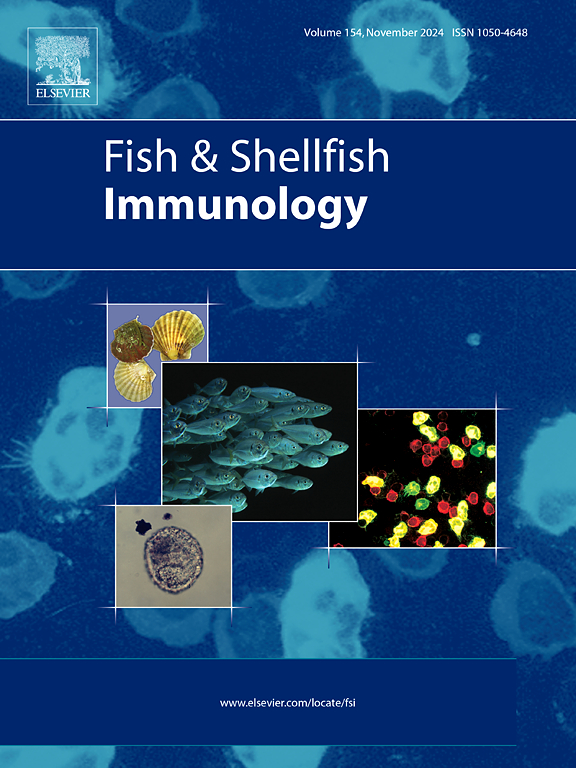罗非鱼IFP35受三种I型ifn亚群通过JAK-STAT信号诱导的程度不同
IF 3.9
2区 农林科学
Q1 FISHERIES
引用次数: 0
摘要
干扰素(IFNs)通过激活一系列干扰素刺激基因(ISGs)的表达来触发有效的抗病毒反应,干扰素诱导蛋白35 (IFP35)已被确定为哺乳动物和鱼类中典型的ISG。然而,需要比较IFP35对鱼类I型ifn不同亚群的不同反应。本研究从罗非鱼中克隆了IFP35基因(命名为On-IFP35),并进行了综合分析,发现On-IFP35基因存在于软骨和硬骨鱼类的一个保守位点上。表达分析表明,On-IFP35在除脾脏外的所有器官/组织中均可检测到,并且在体内和体外经poly (I:C)处理后均被高度诱导。此外,三组I型ifn对on - ifp35表达的诱导作用不同,这些诱导作用依赖于JAK-STAT信号通路。一致地,荧光素酶活性分析显示,I型ifn的三个亚组通过ISRE位点不同地激活了On-IFP35的启动子。因此,目前的结果有助于更好地理解鱼类IFP35在I型IFN反应中的转录调控。本文章由计算机程序翻译,如有差异,请以英文原文为准。
Tilapia IFP35 is differently induced by three subgroups of type I IFNs via the JAK-STAT signaling
Interferons (IFNs) trigger effective antiviral responses by activating the expression of a series of interferon-stimulated genes (ISGs), and interferon-induced protein 35 (IFP35) has been identified as a typical ISG in mammals and fish. Nevertheless, it is required to compare distinct responses of IFP35 to different subgroups of type I IFNs in fish. Here, we cloned IFP35 gene (named as On-IFP35) from tilapia, and syntenic analysis showed that On-IFP35 gene was found in a locus conserved in cartilaginous and bony fishes. Expression analyses showed that On-IFP35 was detectable in all organs/tissues tested except for spleen, and was highly induced after poly (I:C) treatment in vivo and in vitro. In addition, the expression of On-IFP35 was differently induced by three subgroups of type I IFNs, and these induction effect depended on the JAK-STAT signaling. Consistently, luciferase activity analysis revealed that the promoter of On-IFP35 was differently activated by three subgroups of type I IFNs via a ISRE site. The present results thus contribute to better understanding of the transcriptional regulation of fish IFP35 in type I IFN response.
求助全文
通过发布文献求助,成功后即可免费获取论文全文。
去求助
来源期刊

Fish & shellfish immunology
农林科学-海洋与淡水生物学
CiteScore
7.50
自引率
19.10%
发文量
750
审稿时长
68 days
期刊介绍:
Fish and Shellfish Immunology rapidly publishes high-quality, peer-refereed contributions in the expanding fields of fish and shellfish immunology. It presents studies on the basic mechanisms of both the specific and non-specific defense systems, the cells, tissues, and humoral factors involved, their dependence on environmental and intrinsic factors, response to pathogens, response to vaccination, and applied studies on the development of specific vaccines for use in the aquaculture industry.
 求助内容:
求助内容: 应助结果提醒方式:
应助结果提醒方式:


